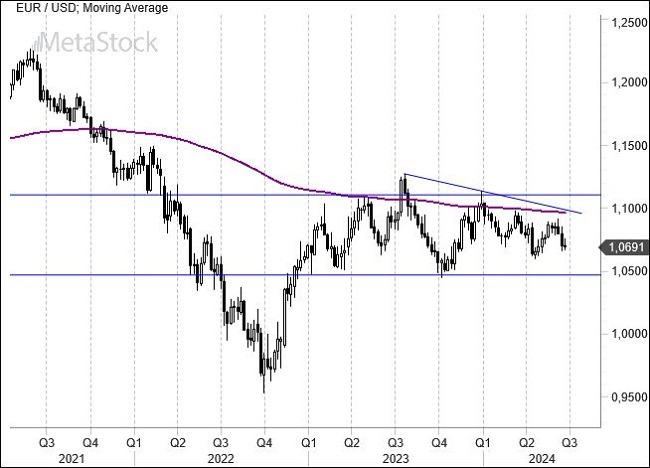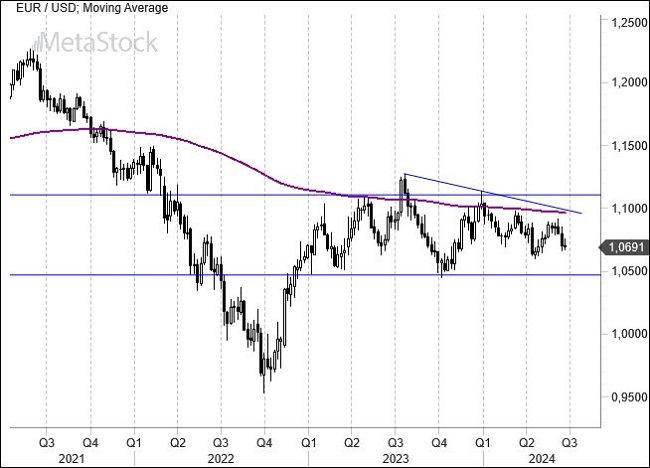- French spreads remain wide compared to German ones in anticipation of the June 30 electoral event, which also puts pressure on the euro. Uncertainty about French political developments significantly affects the European bond, stock, and currency markets, making them more volatile.
- Fed officials continue to express caution about interest rates, preferring to wait for new data before confirming to the market that rates will be cut in 2024. This is good news for the dollar.
- EurUsd remains in the lower part of the trading range but is far from the key support level of 1.05. For now, it is preferable to wait for a more decisive shift in the exchange rate towards zones of stronger support/resistance.
French Elections and the Fed Under Scrutiny
France remains at the forefront with its political crisis, expected to be resolved soon with the upcoming political elections. Currently, the euro is experiencing some pressure, though it is relatively mild.
The spread between France and Germany has surged beyond 70 basis points, the highest in the last decade, fueled by concerns that a sovereigntist government might rely more heavily on public spending (such as pensions) to boost growth, especially following anti-euro sentiments expressed by Le Pen on various occasions. However, Macron does not go into the June 30 meeting with favorable numbers on his side. France’s credit rating was recently cut to AA with a deficit expected to remain above 5% until 2025 by the European Commission. For now, however, the single currency does not seem to have experienced significant shocks, a sign that markets are not fearing a Frexit.
Waiting for the elections, it could be said that this movement in Transalpine bonds represents a good opportunity to buy back the single currency, at least judging by past similar stress scenario phases on spreads. The Fed has essentially announced a rate cut in 2024, but the market is not convinced and anticipates two, which is why the dollar has not gained much ground despite European and Japanese woes. However, Fed officials continue to use a wait-and-see rhetoric, indicating a reluctance to move on interest rates.
Besides the French elections, the American inflation data on July 11 and the GDP deflator on July 26 will provide more insight into Powell’s and the Fed’s intentions at the last summer meeting scheduled for July 30 and 31. This will be the final bell before the crucial (and pre-election) FOMC meeting on September 17-18.
Technical Analysis: EurUsd Stability and Dollar Index Trends
Looking at the EurUsd chart, no particular stress signals emerge. The exchange rate remains at the lower end of a range that sees 1.05 as the key support for July, when there will be more clarity on the European political front and American inflation. For now, the strategy continues to be going short as it approaches 1.10 and long in the 1.05-1.06 area.

The Dollar Index and its chart configuration are nonetheless intriguing. The attempt to break supports has failed, denying a trend reversal pattern that seemed to be forming. The resurgence of bullish action by the dollar now casts a careful eye just above 106. Should the resistance holding back the greenback since the end of last summer be breached, it would open an unexpected front in American currency, which would then mean an end to the rate cut expectations in 2024.



Leave a Reply
You must be logged in to post a comment.